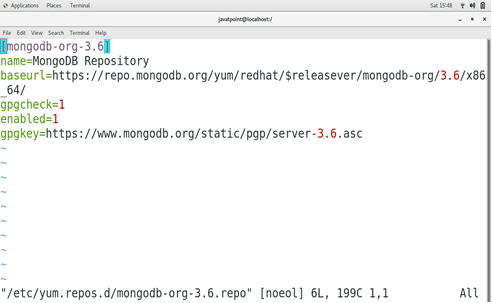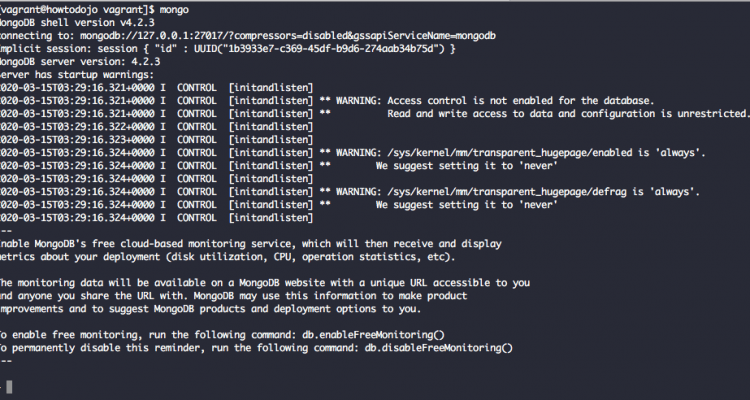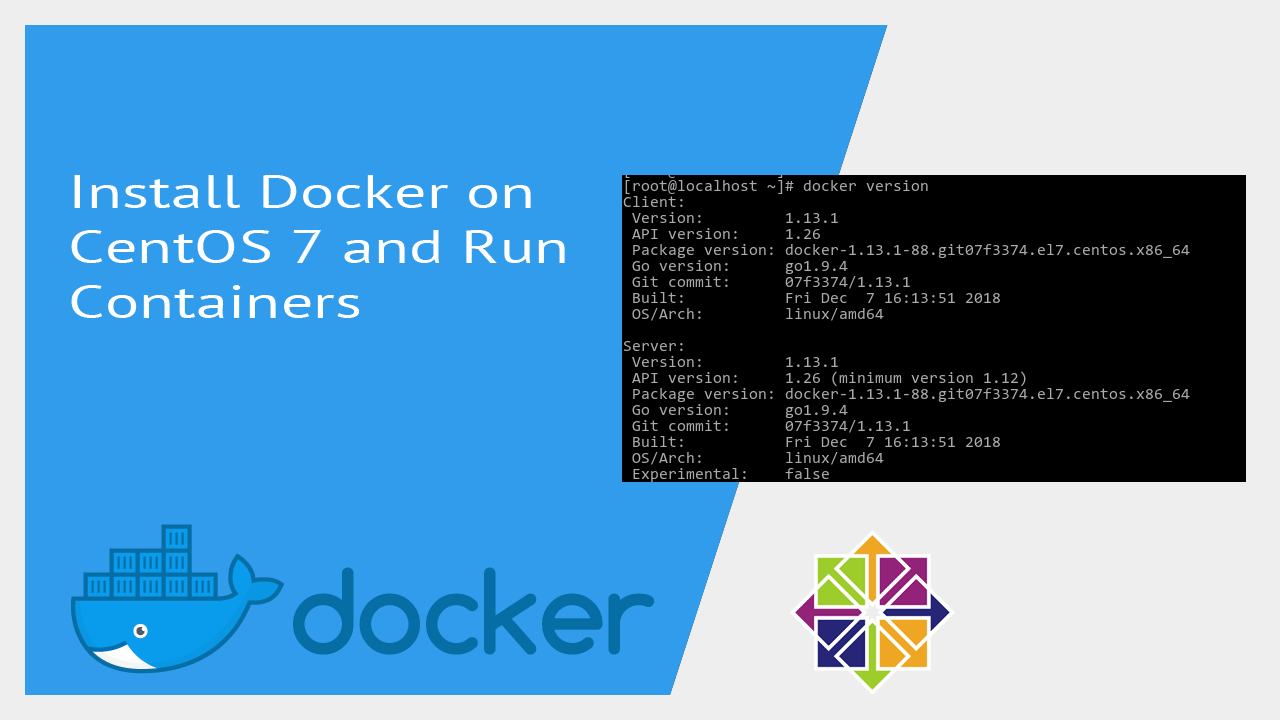
- Install mongodb centos how to#
- Install mongodb centos install#
- Install mongodb centos code#
- Install mongodb centos free#
ProductNameAndVersion ("įeb 08 10:54:27 VM-14-228-centos dockerd: time="T10:54:27.897323149+08:00" level=warning msg="Error (Unable to complete atomic operation, key modified) deleting object, retrying. So I try to run docker run quay.io/mongodb/charts:19.12.2
Install mongodb centos install#
If successful you should get the output below.I try it install MongDB Charts on my Centos 7.Īfter run docker stack deploy -c charts-docker-swarm-19.12.2.yml mongodb-chartsĪttyf7r08cx0 mongodb-charts_charts replicated 0/1 quay.io/mongodb/charts:19.12.2 *:80->80/tcp, *:443->443/tcpĪnd docker service log attyf7r08cx0 print nothing!
Install mongodb centos code#
Now create a new MongoDB user by running the code below. Next, switch to the database admin by running. First, create a new repository configuration file mongodb-org-4.2. But you can easily add the MongoDB official package repository on CentOS 8 and install it from there. repo file for yum, the package management utility for CentOS: Then, visit the Install on Red Hat section of.
Install mongodb centos how to#
From the following article you will find out how to install the latest (or specific) version of mongo shell on Ubuntu and CentOS. The mongo shell is included in MongoDB package, but to connect to MongoDB it is enough to install MongoDB client only, without MongoDB itself. However, MongoDB maintains a dedicated repository. The MongoDB client, also known as mongo shell, is a command line interface to MongoDB. To do so, first access MongoDB’s shell: # mongo MongoDB is not available in the official package repository of CentOS 8. The mongodb-org package does not exist within the default repositories for CentOS. It’s always good advice to create an admin user with elevated privileges to perform elevated tasks.

To enable mongodb repository on CentOS we need to create a yum repos file for mongodb with name of mongodb-org. Step 1 MongoDB official repositories enable.

Let’s now switch gears and create an Admin user. Here we follow a few steps to install MongoDB on the CentOS system. Connect MongoDB Shell Creating MongoDBan Admin User You should get output similar output as shown in the screenshot below. You can now access MongoDB’s shell by simply issuing the command: # mongo Great! we have confirmed that MongoDB is up and running. To verify the status of MongoDB, run: # systemctl status mongodĪlternatively, you can use the netstat utility to confirm that indeed Mongod service is listening. Next, start and enable MongoDB to start on boot by running the commands below. Having enabled the repository, the next step will be to install MongoDB using the following dnf command.

Once all installation is completed, start the MongoDB service and add it to the system boot. To install MongoDB NoSQL Database, run the dnf command below.

Step 2 - Install MongoDB NoSQL Database Server. īaseurl=$releasever/mongodb-org/development/x86_64/ As a result, the MongoDB repository has been added to the CentOS 8 system. Paste the configuration below and save the file. So firstly, create a repository file as shown. Since MongoDB is not present in the CentOS 8 default repository, we are going to add it manually. Open /etc/selinux/config file set the SELINUX parameter as follows. Copy the following contents to the repo file. MongoDB only supports the 64-bit versions of these platforms. Also, you will learn the commands and custom configurations for managing the MongoDB server. In this tutorial, you will learn how to install MongoDB on CentOS 8. MongoDB 5.0 Community Edition supports the following 64-bit versions of Red Hat Enterprise Linux (RHEL), CentOS Linux, and Oracle Linux 1 on x8664 architecture: RHEL / CentOS / Oracle 8. Some of the blue-chip companies that have incorporated MongoDB in their applications include Adobe, Facebook, Google, eBay, and Coinbase. 1 MongoDB /etc//mongodb-org.repo mongodb-org-3.4 nameMongoDB Repository baseurl.
Install mongodb centos free#
It’s free and opensource and ships with a set of cool and nifty features such as file storage, data replication, Ad-hoc queries, and load balancing just to mention a few. MongoDB is a popular document-based and general-purpose NoSQL database engine that stores data in JSON format.


 0 kommentar(er)
0 kommentar(er)
